If you are a travel photographer, a mirrorless camera is a must-have. It is lightweight, compact, and offers high-quality images and videos, making it the ideal companion for capturing unforgettable travel memories.
Whether you’re climbing mountains, exploring new cities, or lounging on a tropical beach, don’t forget to bring your mirrorless travel camera and start capturing those breathtaking photos!
When choosing the best mirrorless camera for travel, consider the size and weight, sensor size and ISO capability, weather sealing, and lens system. And don’t forget to keep in mind the unique requirements of your travel photography.
Olympus OM-D E-M5 Mark III: Easy To Use Controls
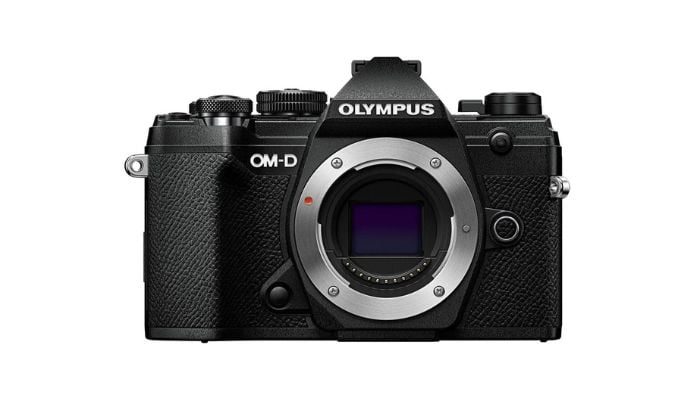
Key Features
- Mégapixels: 20MP
- Continuous shooting: 10fps
- Video: 4K
Olympus OM-D E-M5 Mark III is incredibly lightweight and compact, making it perfect for travel and urban photography. Its Micro Four Thirds sensor produces beautiful images with excellent details, even in low-light conditions.
The TruePic VIII processor offers a wide dynamic range that you’ll love. Another interesting feature is the ‘Pro Capture’ mode that allows you to capture an action in a fraction of a second with a half-pressed shutter button. It also features decent video stabilization and a fully articulated screen for vlogging.
However, this mirrorless travel camera has some drawbacks. It has a smaller sensor than some larger APS-C cameras on the market, which may limit your ability to crop and enlarge images.
Furthermore, the autofocus system may struggle in low-light conditions, and the battery life is not as long as other Olympus cameras on the market.
Pros
Cons
- Lightweight and compact design
- Weather-resistant
- Micro Four Thirds sensor with good image quality
- Articulated screen for unconventional angles
- The Autofocus system could be better
- Limited lens selection compared to other systems
Canon EOS R50: Light Weight

Key Features
- Mégapixels: 24MP
- Continuous speed: 15fps
- Video: 4K
One of the main advantages of the Canon EOS R50 is its user-friendly interface. It has a simplified layout of controls, making it easy to navigate through menus and adjust settings. As one of the best mirrorless travel cameras, it also features a vari-angle touchscreen, perfect for capturing photos from different angles.
Another advantage of the EOS R50 is its advanced autofocus system. The Dual Pixel AF II provides fast and precise autofocus performance for both photos and videos, making it an excellent choice for capturing photos of people and objects.
In addition, this Canon camera offers the possibility to shoot video in 4K, which is a higher resolution than Full HD. However, the EOS R50 has some disadvantages. One of the main issues I encountered was the lack of in-body stabilization, which can be a downside when shooting handheld. Additionally, I found that the image quality wasn’t excellent at night, which could be a problem for those who enjoy night photography.
Pros
Cons
- User-friendly interface for beginners
- Fast and accurate autofocus performance
- 4K video recording
- Versatile range of RF lenses
- No built-in stabilization”
- Image quality may suffer in low-light conditions
Sony Alpha ZV-E10: For Videos
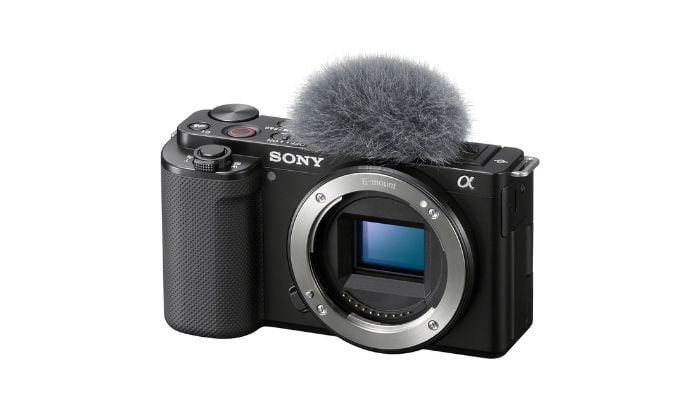
Key Features
- Mégapixels: 24MP
- Continuous Speed: 11fps
- Video: 4K
As a photographer who’s always on the move, I was excited to test out the Sony Alpha ZV-E10 mirrorless camera for my travels. One of the main advantages of the ZV-E10 lies in its video capabilities. The fully articulating screen, live streaming capabilities, and electronic stabilization make it an excellent choice for vloggers and content creators.
On the positive side, the ZV-E10 offers impressive image quality at low ISO settings and records smooth Full HD 1080p/120p slow-motion videos directly in the camera. Being one of the best mirrorless cameras for video, it also has the ability to detect and track moving subjects, which is useful for capturing action sports or other fast-paced events.
However, it’s important to note that the 24-megapixel APS-C sensor has a 1.5x crop factor when using full-frame lenses, so if you’re looking for a wider field of view, this may not be the camera for you.
Furthermore, the autofocus can be slow to respond, especially in low-light conditions, and the camera often fails to detect faces, resulting in choppy sequences.
Pros
Cons
- Excellent video features
- Electronic shake reduction
- Advanced autofocus technology
- Ability to detect and track moving subjects
- ISOs of 25600 and 51200 result in color noise and grain
- Rolling shutter can cause a noticeable jelly effect
Fujifilm X-T5: Impressive Image Quality
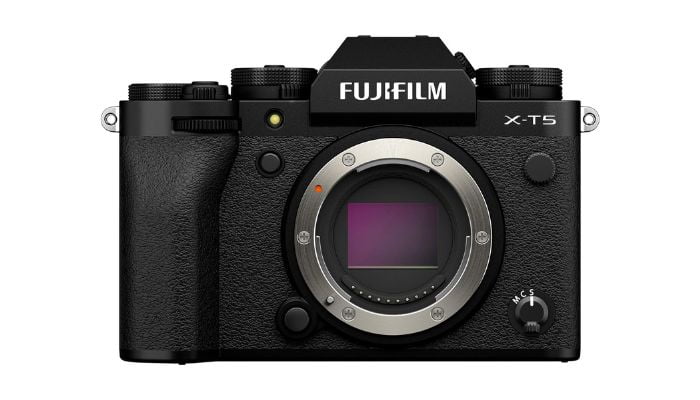
Key Features
- Mégapixels: 40MP
- Continuous shooting : 15fps
- Video: 4K
The X-T5 offers improved image quality, a standard sensitivity of 125 ISO, and the fastest shutter speed of 1/180000 s. It also features a Pixel Shift Multi-Shot function that expands photographic possibilities, making it an excellent choice for landscape and travel photographers.
In addition, it features a fully articulating touchscreen LCD, making it easy to use while on the go. This Fujifilm camera is also highly capable for video recording, able to record up to 6.2K in 4:2:2 10-bit color internally or Apple ProRes 12-bit and Blackmagic RAW via HDMI.
However, this mirrorless travel camera does have some drawbacks. Some users have reported issues with battery life and autofocus, which can be problematic for photographers who need to take quick and precise shots.
Pros
Cons
- Portable and compact
- Offers image stabilization
- Bluetooth and Wi-Fi connectivity
- Weather-resistant
- Low battery capacity
- Price tag
Panasonic LUMIX G9: Integrated 5-Axis Stabilization System
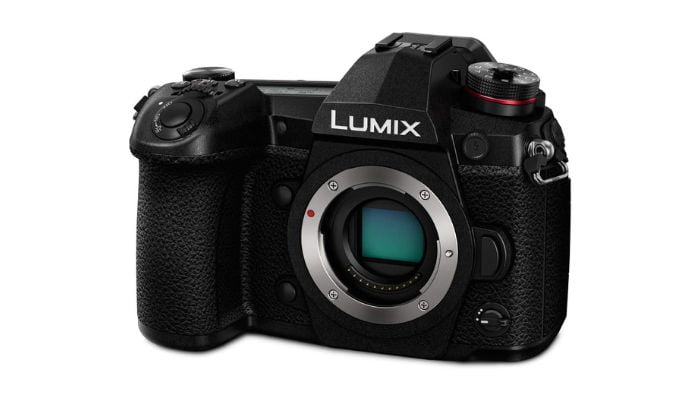
Key Features
- Mégapixels: 20MP
- Continuous speed: 20fps
- Video: 4K
One of the main advantages of the G9 is its ability to capture very high-quality videos. Panasonic cameras are known for their excellent video quality, and the G9 is no exception to this rule. The camera features a range of AF modes, including Live Tracking and Zone AF, and a redesigned eye sensor that enables faster focusing in low-light conditions and at high shutter speeds.
The G9 also features a touchscreen interface that works well for composing images and navigating menus. It also has an excellent electronic viewfinder that refreshes at 120 fps and has no blackout, which is useful when tracking subjects.
However, the G9 does have some drawbacks. Although it’s an excellent mirrorless camera for travel, it might not be the best option for those who need a longer battery life. The G9’s battery life is only about 400 shots per charge, which may not be sufficient for some users.
Pros
Cons
- Excellent video quality
- Two-axis optical zoom
- 225 AF points for fast focusing
- Touchscreen interface and electronic viewfinder
- Poor battery life
- Some may prefer a larger sensor
Nikon Z 30: Fully Articulated Touch Screen
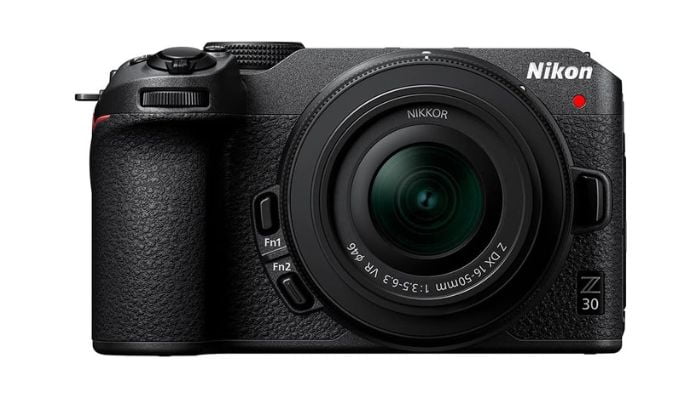
Key Features
- Mégapixels: 21MP
- Continuous Speed: 11fps
- Video: 4K
As a photographer who appreciates the importance of quality equipment, I must say that the Nikon Z 30 mirrorless camera for travel is a solid kit for those on a budget. It’s designed to cater to vloggers and content creators, with its APS-C sensor and fully articulated touchscreen.
The Z 30 is the first in the Z series to offer 4K video mode without cropping, which is a significant advantage for those looking to create high-quality video content.
However, the Z 30 lacks some essential features that may deter the target market, such as image stabilization and a headphone jack. These features can be crucial for certain types of photography and video work, so it’s important to consider them before purchasing the camera.
Pros
Cons
- Compact and lightweight design
- Good image quality
- High ISO performance
- 4K video mode without cropping
- No image stabilization
- No headphone jack
- No viewfinder
Fujifilm X-T30 II: Can Handle a Wide Variety of Lenses

Key Features
- Mégapixels: 26MP
- Continuous Speed: 8fps
- Video: 4K
First of all, the X-T30 II is incredibly compact and lightweight, making it a perfect mirrorless camera for travel. Its APS-C sensor is the same as the ones in the X-T3 and X-T4, which means it offers sufficient resolution for high-quality photos.
It also offers fast and precise autofocus and allows controlling how much light can reach the sensor. In low-light situations, the increased ISO range of the X-T30 II is a real asset. Combined with an incredibly fast shutter speed, you can hold the camera by hand at a lower sensitivity than most cameras normally allow, without sacrificing quality.
However, the X-T30 II has some drawbacks. The battery life isn’t the best, so if you plan on doing a lot of shooting, you may need to bring extra batteries with you. Furthermore, the camera does not have built-in image stabilization, so you’ll need to rely on lenses with built-in stabilization or use a tripod for stable shots.
Pros
Cons
- Offers many features
- Fast and precise autofocus
- Excellent control over striking backlight sensor
- Intuitive operation
- Low battery life
- Records up to 30 minutes of 4K video at a time
- No in-body image stabilization
Sony α7R IV: Large Dynamic Range
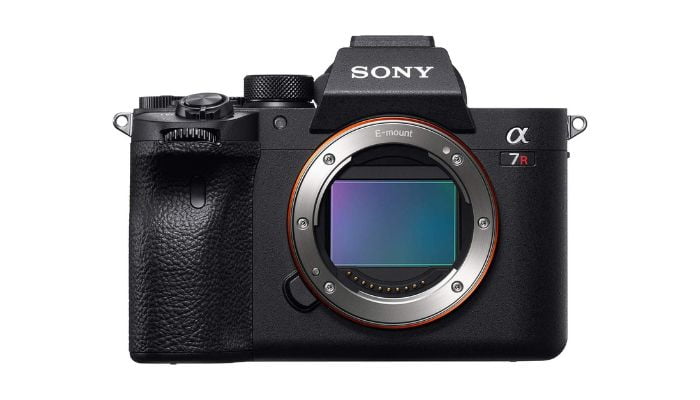
Key Features
- Mégapixels: 61MP
- Continuous Speed: 10fps
- Video: 4K
As a photographer who has spent decades capturing stunning images, I can say that the Sony α7R IV is an excellent option for those looking for a versatile mirrorless camera for travel that can capture high-resolution images and videos.
It features a high-resolution full-frame sensor, excellent autofocus, and a range of features that make it a solid choice for landscape photographers of all levels.
Another advantage of this camera is its advanced processor, which enhances both autofocus performance and burst shooting. Additionally, the camera supports Pixel Shift multi-shot, allowing you to easily switch between photo and video modes.
However, this camera also has some disadvantages. One issue is that the battery life is not as powerful as some full-frame cameras, so you’ll need to pay attention to your usage. Additionally, the camera can be quite expensive, which may be discouraging for some photographers.
Pros
Cons
- Excellent autofocus
- Wide range of features
- Ability to use a wide range of lenses
- Superior image quality
- High price
- Not compact
